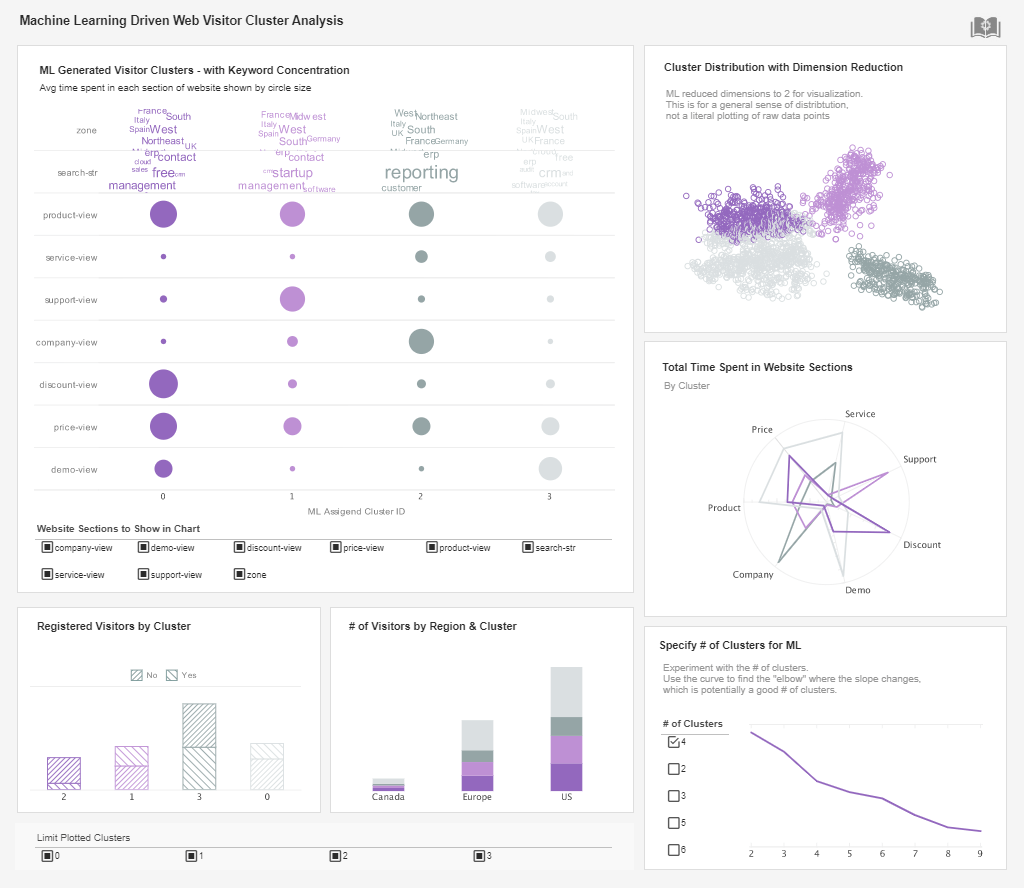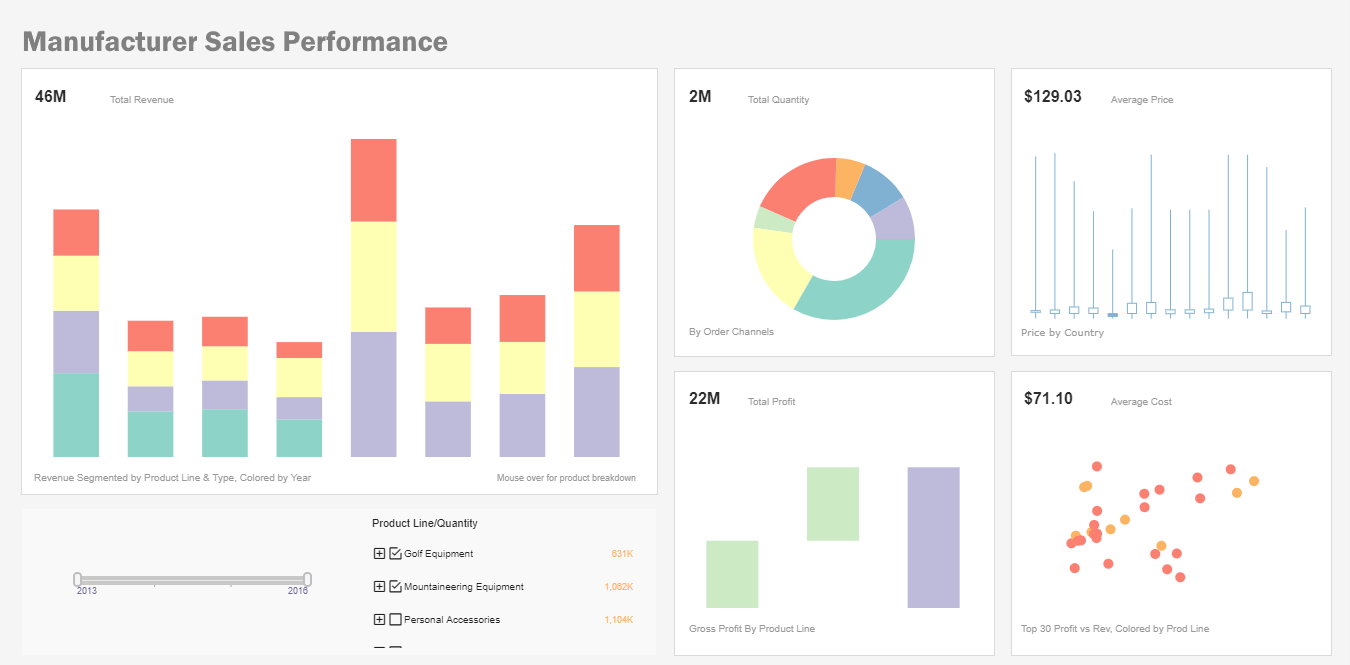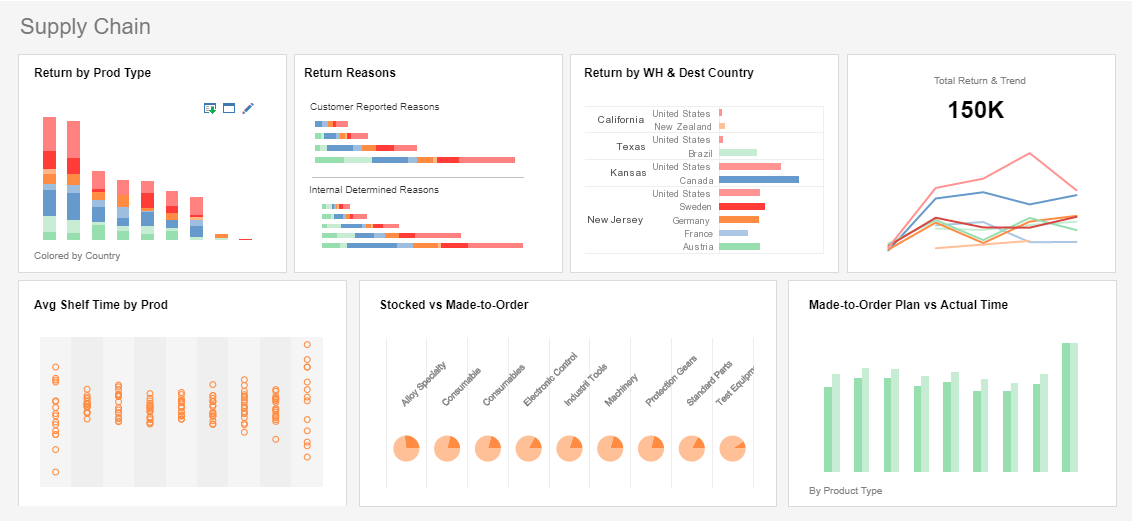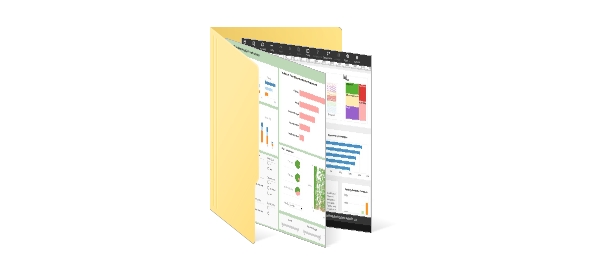Choosing InetSoft StyleBI over Syncfusion Dashboard Platform
Selecting Business Intelligence (BI) solutions for any organization is hard, risky, and inherently biased. It is made easy by the G2 Crowd review platform with its real-time, transparent and unbiased user reviews. This helps an organization to objectively assess what is best by leveraging the wisdom of the crowd, limiting the risk, and finding out what works. The reviews are validated by G2 Crowd thereby helping organizations make better buying decisions.
G2 Crowd recently compared InetSoft StyleBI and Syncfusion Dashboard Platform over various parameters. InetSoft won strong ratings across the general categories of Ratings, Reports, Self Service, Advanced Analytics, Building Reports, and Platform. Each category had various parameters detailed below.

A Syncfusion Alternative with Maximum Self Service
InetSoft has done extremely well in general usage ratings - Meeting Requirements, Ease of Doing Business With, and Product Direction. The speed with which dashboards and reports can be churned out swiftly had been a great reason for the reviewers to recommend StyleBI. The Product Direction parameter was also ranked favorably with the extensive "how to" reference videos on numerous topics and the mentoring service from InetSoft to kick-start an organization's efforts in the BI space.
Dashboards, Scorecards, and Steps to Answer were the parameters where StyleBI was lauded for its robustness and described as a complete and powerful go-to tool for visual data analysis. These parameters were evaluated under the Reports Category aimed to strengthen an organization's reporting by balancing the visual images and the reports in the right proportions to gain valuable insights into critical decisions making.
StyleBI uses the same metadata layer for its reports and dashboards. The advantage of this is that the users can put formulas in one place and the dashboards and reports will show the same results providing a single version of truth. This was evident in the Self Service category where the parameters Calculated Fields, Data Column Filtering, and Data Discovery where InetSoft and Syncfusion were evaluated. Self-service reporting is the natural and prudent evolution of information management. The benefits of decreased time to information and the broadening of information access are key drivers for competitive success of any organization.
List of Areas Where InetSoft Ranked Higher than Syncfusion Dashboard Platform
The detailed list of categories & parameters of how InetSoft StyleBI scored over Syncfusion Dashboard Platform is presented below. Please click here or the G2 logo to go over the individual reviews.
- Meets Requirements
- Ease of Doing Business With
- Product Direction (% Positive)
- Data Visualization
- Steps to Answer
- Score Cards
- Dashboards
- Data Transformation
- Data Modeling
- WYSIWYG Report Design
- Calculated Fields
- Data Column Filtering
- Data Discovery
- User, Role, and Access Management
- Performance and Reliability
- Breadth of Partner Applications
Make Better Decisions with Predictive Analytics
Another major category win against Syncfusion is in the Data Visualizations category under Advanced Analytics. StyleBI's data caching technology enables the management of large volumes of data. The tool also offers various data displays like tabbed interfaces, sliders, calendars etc. Prediction (proactive) rather than reporting (reactive), will be the focus of any organization in the current times where analytics of customers' spending behavior are of vital importance.
The Building Reports category saw InetSoft's StyleBI win big over Syncfusion's solution. The parameters for comparison - Data Transformation, Data Modeling, WYSIWYG Report Design, and Integration APIs clearly exhibited InetSoft's capability to mash up disparate data sources and schedule reports automatically. Why is this category of reporting critical? This will help any organization to change reports on the fly. The benefits and flexibility of the StyleBI platform result in enabling an incredibly powerful and distributed development environment that allows all levels of the organization visibility and access to data.
InetSoft helps Organizations with Fact Based Decision Making
G2 Crowd also revealed that InetSoft offered better value in User, Role and Access Management, Internationalization, Performance and Reliability, and Breadth of Partner Applications. These parameters were studied under the Platform category.
StyleBI helps any organization to become better at fact based decision making without too much reliance on IT to access critical information. InetSoft helps eliminating costly delays in decision-making and thereby the unnecessary strain on the IT department.
StyleBI offers a business environment in which business users no longer need to rely on IT, but instead can access and manipulate data on their own. With InetSoft's connectors, the users have the flexibility to mashup any new data on the run with ability to do business user level data mashups. This solution allows users to rapidly add new sources from disparate data locations and analyze data side-by-side through both dashboards and reports.
Loom Reed Manufacturer Migrates from Syncfusion to InetSoft: Strategic Rationale and Practical Roadmap
A specialized loom reed manufacturer that supplies precision metal and carbon-fiber reeds to niche textile mills, restoration workshops, and custom loom builders faces a decision common to many manufacturing SMEs: modernize the analytics and reporting stack to better support production tuning, inventory control, and customer-facing performance reporting. Moving from a UI/component-centric toolkit like Syncfusion to a full-featured BI and analytics platform such as InetSoft is a shift from embedded component functionality toward an enterprise-capable reporting, mashup, and dashboard ecosystem. The following outlines the motives behind such a migration, the practical considerations, and the measurable benefits for operations, quality, and customer experience.
Business Drivers for the Switch
Several business drivers commonly motivate a loom reed maker to choose a platform like InetSoft over Syncfusion. First, user self-service for non-technical staff becomes essential as production supervisors and sales teams demand on-demand metrics without IT intervention. Second, data mashup and blending capabilities enable the consolidation of machine telemetry, ERP inventory data, and customer orders for end-to-end visibility. Third, report distribution and scheduling at scale—delivering tailored PDFs, web dashboards, and embedded analytics into customer portals—are more mature in a BI platform. Finally, long-term total cost of ownership (TCO) can favor an integrated BI product when development overhead, maintenance, and customization costs of constructing dashboards from UI components are accounted for.
Technical and Architectural Considerations
The architectural gap between Syncfusion and InetSoft is significant. Syncfusion provides front-end UI components and visualization widgets that are typically embedded in bespoke applications. InetSoft provides a server-based analytics engine, a self-service mashup interface, and report/dashboards that can be embedded or served standalone. Key considerations for migration include data connectivity, authentication/SSO integration, report and dashboard rebuild strategy, and embedding approach for existing customer portals.
- Data connectivity: Establish direct connectors to the ERP, MES or SCADA systems used by the shop floor, plus CSV/Excel ingestion pipelines for historical reed quality tests. The chosen BI platform must support the latency and data volume characteristics of production telemetry while enabling lightweight mashups for ad hoc analysis.
- Authentication and access control: Integrate with the existing identity provider (LDAP/Active Directory or SAML) to preserve role-based access—separating shop-floor operational views from sales/customer-facing summaries.
- Embedding strategy: Decide whether dashboards replace in-app visualizations or augment them; leverage iframe or native embedding APIs to keep customer portals coherent.
- Report migration: Map the most critical Syncfusion visualizations and custom reports to InetSoft’s report models. Prioritize operational and customer-facing reports for immediate migration.
Migration Roadmap and Phasing
A phased migration minimizes disruption. Phase one should focus on duplicate-read capabilities: run InetSoft in parallel to validate data fidelity against existing Syncfusion-based dashboards and to train users on the new interface. Phase two centers on full migration of operational dashboards—OEE (overall equipment effectiveness), reed defect tracking, and inventory reorder alerts. Phase three delivers customer-facing analytics in the portal and automates scheduled distribution of compliance or quality certificates. Each phase must include user acceptance testing, performance benchmarking, and rollback plans.
Operational Benefits
Switching to a BI-first platform delivers tangible operational benefits for a precision manufacturer. Real-time dashboards expose bottlenecks: loom downtime, reed replacement frequency, and setup times between different reed profiles. Combining telemetry with production orders makes it possible to compute per-order throughput and waste rates, enabling targeted process improvements. Automated alerts—threshold breaches for reed wear or humidity affecting reed dimensions—support proactive maintenance, reducing emergency stoppages and improving on-time delivery.
Quality and Traceability Improvements
Quality management can be transformed by integrating test results, batch records, and material certificates into a single analytical view. A BI platform simplifies tracing a reed batch back through supplier certificates and production runs to identify root causes of defects. Visualizing correlations between reed alloy lot, loom speed, and defect types helps manufacturing engineers optimize specifications and supplier choices. Embedding trend analysis into daily standups ensures improvements cascade quickly across shifts.
Customer Experience Enhancements
Customers of a niche reed manufacturer value predictability and insight into order status and performance. Transitioning to InetSoft enables creation of customer-specific dashboards that show order progress, lead-time forecasts, and historical performance metrics on reed longevity under specified operating conditions. White-labeled, embeddable dashboards can differentiate the manufacturer in competitive RFPs, turning data transparency into a selling point rather than a back-office capability.
Developer and Maintenance Considerations
From a development standpoint, moving away from low-level UI components to a server-based analytics platform reduces the amount of custom front-end code that needs to be written, tested, and maintained. Data transforms and mashups that were previously implemented in application logic can be ported into the BI layer, centralizing data logic and reducing duplicated ETL code. Maintenance becomes less about keeping disparate UI widgets compatible and more about securing and scaling a single analytics service.
Cost and ROI Assessment
Cost considerations should factor in license model differences, developer hours saved, and productivity gains. While a BI platform may carry a higher upfront license fee than component libraries, the reduction in custom development time, faster onboarding of non-technical users, and improved customer retention from better reporting often produce a favorable ROI within 12–24 months. Quantifiable benefits to include in ROI models are reduced downtime, fewer quality incidents, decreased ad-hoc report requests to IT, and additional sales enabled by customer-facing analytics.
Change Management and Training
Successful adoption hinges on structured training and governance. Establish a center of excellence with “power users” from production, quality, and sales who can author and certify dashboards. Create templates for common operational needs—shift summary, machine health, and order backlog—so that new dashboards adhere to consistent design and semantic definitions. Provide role-based training sessions and short reference materials to accelerate adoption and prevent shadow analytics efforts.
Risks and Mitigations
Risks include data migration mismatches, performance bottlenecks under concurrent user load, and resistance from users accustomed to older dashboards. Mitigation strategies include parallel validation of KPIs, load testing the InetSoft environment with realistic concurrency, and early wins that demonstrate value—such as a predictive alert that avoided a costly production stoppage. Maintain a rollback path for each migration phase so that critical reporting capabilities remain available during transition.
Transitioning from Syncfusion to InetSoft represents a shift from component-driven visualization to an integrated analytics platform capable of addressing operational, quality, and customer experience needs at scale. For a loom reed manufacturer whose business depends on precision, traceability, and specialized customer relationships, a BI-led approach can unlock process improvements, sharper quality control, and differentiated customer service—transforming data from a byproduct of production into a strategic asset.










